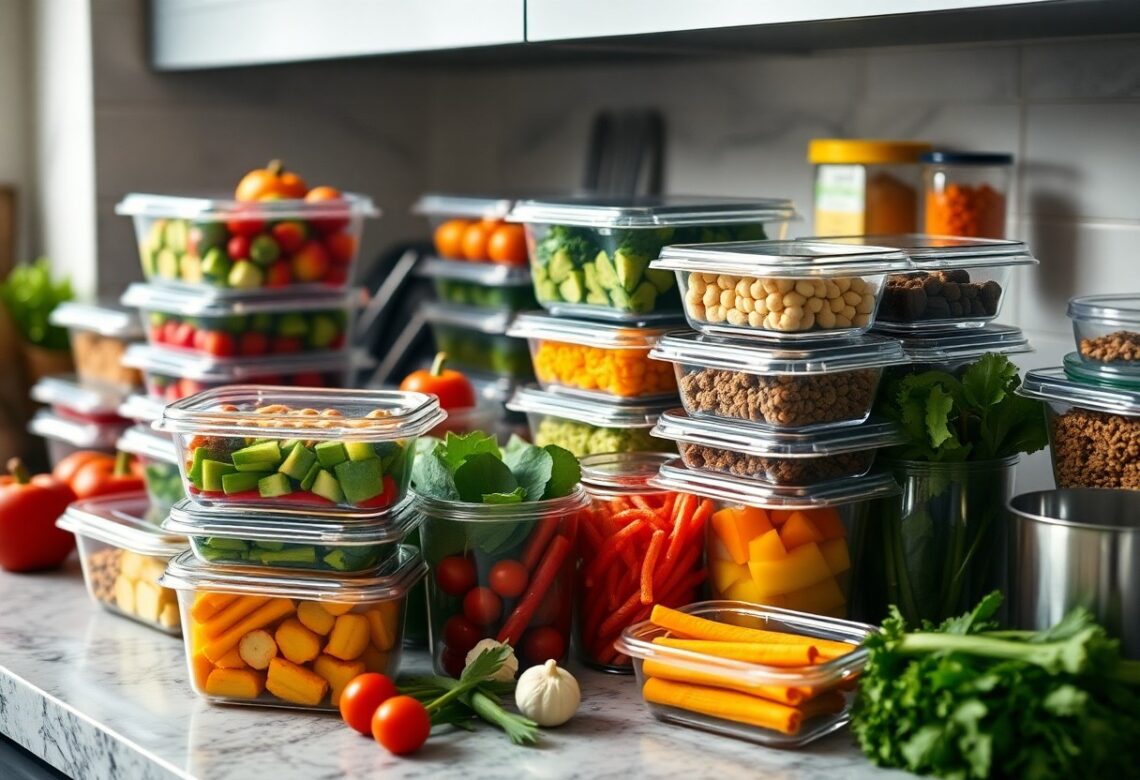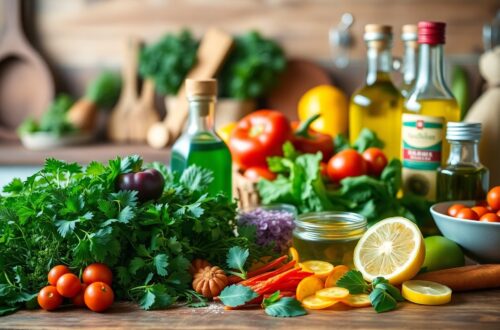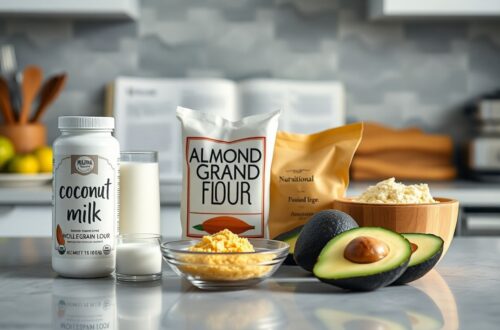With the right batch cooking strategies, you can simplify your meal prep process and create healthy, weight-loss-friendly meals that fit your lifestyle. This guide will walk you through the crucial techniques and tips to effectively batch cook, ensuring you always have nutritious meals ready to go. By planning ahead and making the most of your ingredients, you’ll not only save time in the kitchen but also keep your weight loss goals on track. Let’s explore how you can transform your cooking habits for lasting success!
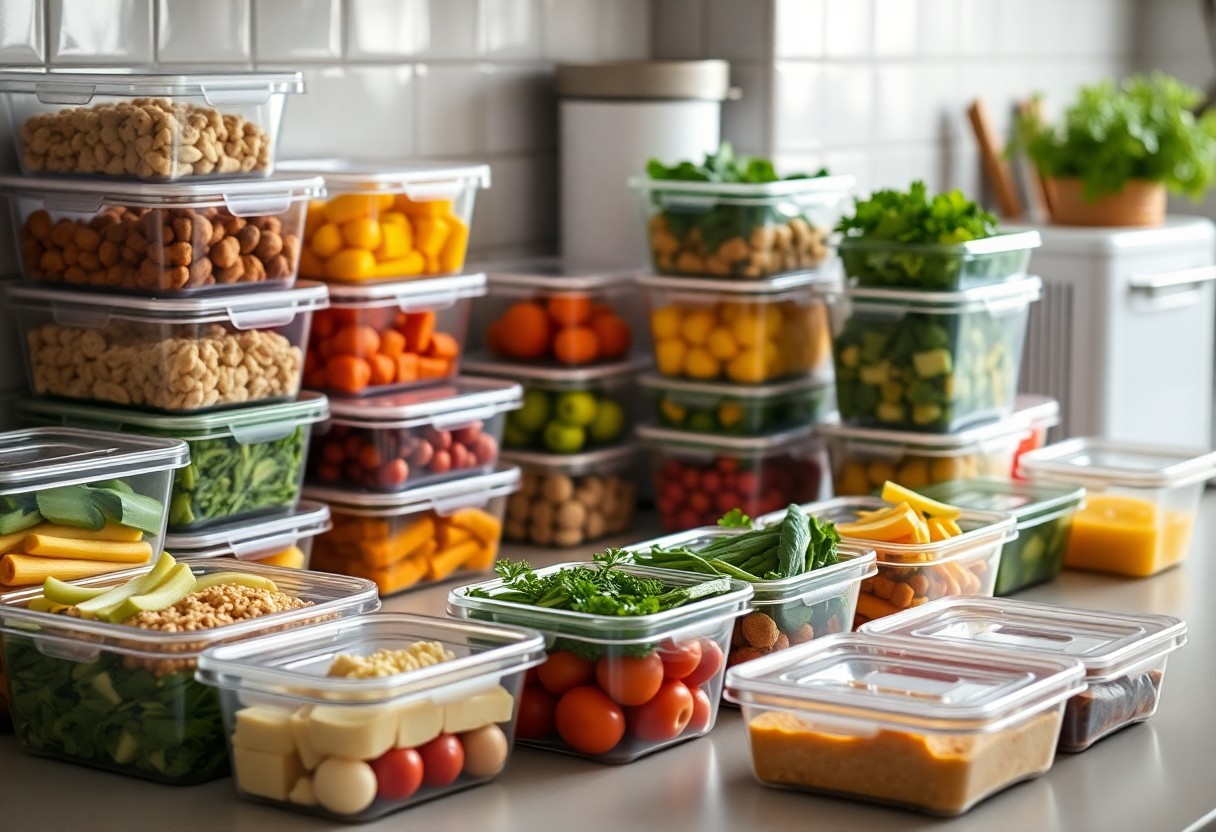
Key Takeaways:
- Meal Planning: Establish a weekly meal plan to streamline your cooking process and ensure portion control.
- Healthy Ingredients: Focus on whole, nutrient-dense foods like vegetables, lean proteins, and whole grains to support weight loss.
- Batch Prep: Cook larger portions of meals at once to save time and reduce the temptation to opt for unhealthy options on busy days.
- Storage Solutions: Use airtight containers to store prepped meals, keeping them fresh and easy to grab when needed.
- Variety: Incorporate a mix of flavors and textures in your batch meals to prevent monotony and encourage satisfaction.
- Flexible Recipes: Choose recipes that are adaptable, allowing for ingredient substitutions based on what’s in season or on sale.
- Portion Control: Pre-portion meals into single servings to help manage caloric intake and promote mindful eating.
Understanding Batch Cooking
The key to making meal preparation manageable and efficient lies in understanding batch cooking. This method allows you to prepare large quantities of food in one go, saving time and effort during your busy week. By having ready-to-eat meals on hand, you can ensure that your food choices align with your weight loss goals, making it easier to resist temptations and maintain healthy eating habits.
What is Batch Cooking?
About batch cooking, it involves the process of preparing and cooking multiple servings of meals at once. You can then store these meals in the refrigerator or freezer for later enjoyment. This approach not only streamlines your cooking routine but also helps in balancing nutrition by allowing you to control ingredients and portion sizes effectively.
Benefits of Batch Cooking for Weight Loss
With batch cooking, you’ll find it easier to stick to your weight loss plan, as having meals pre-prepared encourages healthier eating habits. You’ll reduce the temptation to opt for quick, unhealthy options when hunger strikes, ensuring you make better food choices. Additionally, it can help you save money and minimize food waste, all while supporting your personal dietary goals.
For instance, by dedicating a few hours each week to batch cooking, you create a stockpile of wholesome meals that you can choose from when cravings hit or time is tight. This not only eliminates the need for last-minute takeout but also helps you manage portion control effectively. As a result, you have greater control over your calorie intake, making it easier for you to achieve your weight loss objectives while enjoying a variety of delicious, nutritious options.
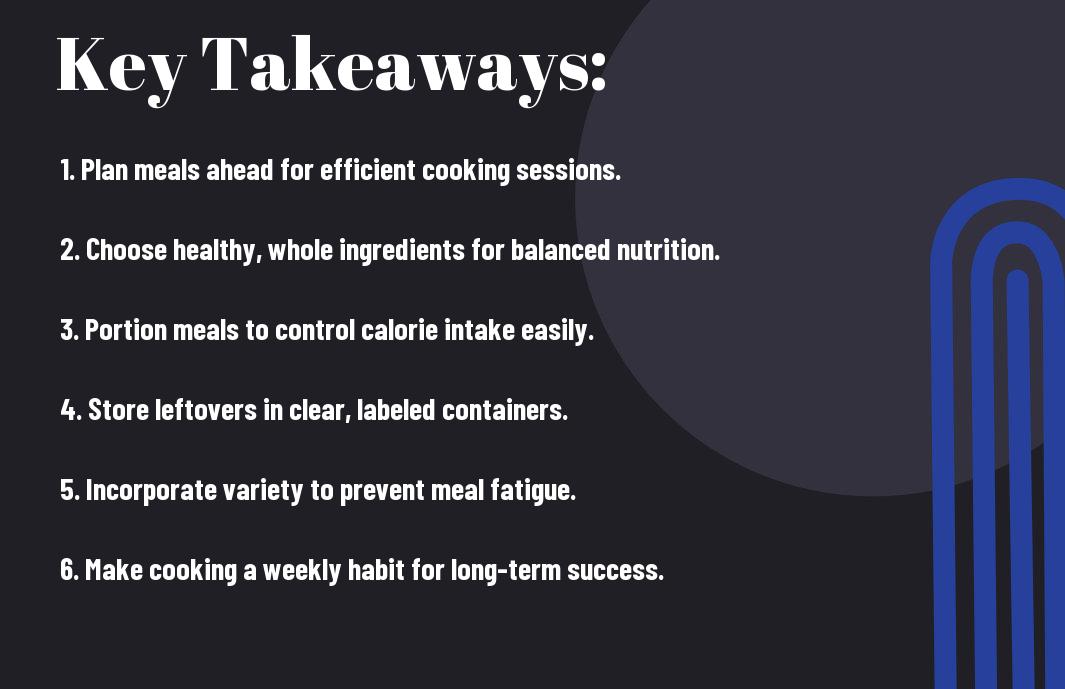
Planning Your Batch Cooking
While initiateing on your batch cooking journey, it’s crucial to have a solid plan in place. Assess your weekly schedule, diet preferences, and cooking abilities to lay the groundwork for success. Allocate specific days for cooking and ensure to create a shopping list based on your planned meals. By organizing your time and resources, you’ll set yourself up for a more efficient and enjoyable cooking experience.
Setting Realistic Goals
One of the keys to successful batch cooking is setting achievable goals that align with your weight loss journey. Consider how many meals you realistically can prepare in one cooking session and adjust your expectations accordingly. Small, manageable targets help keep you motivated and make it easier to stick with your plan in the long run.
Meal Planning and Recipes
Realistic meal planning involves selecting a variety of recipes that suit your tastes while supporting your weight loss goals. Commit to dishes that are not only nutritious but also enjoyable to eat, as this will help you stay on track. Aim for a mix of proteins, healthy fats, and complex carbohydrates to create balanced meals.
The best approach to meal planning is to curate a collection of recipes that you can rotate throughout the week. Choose versatile ingredients that can be used in multiple dishes, which will save both time and money. Preparing meals in bulk can also reduce the temptation to indulge in unhealthy options. By dedicating a little time to plan your recipes, you’ll find that batch cooking becomes a simple and effective way to stick to your weight loss goals.
Preparing for Batch Cooking
Many people find that taking time to prepare for batch cooking can lead to greater success in their weight loss journey. Begin by organizing your workspace and ensuring you have a clear plan for the meals you want to create. You can explore more tips and insights in the Batch Cooking Basics – Natural Comfort … guide to set you on the right path.
Essential Kitchen Tools and Equipment
Kitchen tools play a significant role in making your batch cooking experience efficient and enjoyable. Invest in vital items like high-quality knives, cutting boards, storage containers, and slow cookers or Instant Pots. With the right equipment, you’ll find meal prep becomes more manageable, allowing you to focus on creating delicious and healthy meals.
Grocery Shopping Tips
Around the time of your meal prep, it’s vital to make strategic grocery shopping decisions. Create a comprehensive list based on your planned recipes, and stick to it to avoid impulse buys. Additionally, plan your shopping trips efficiently to save time.
- Shop seasonal for fresh produce.
- Buy in bulk to save money and minimize packaging waste.
- Opt for versatile ingredients that can be used across multiple meals.
After developing your grocery shopping techniques, you’ll find it easier to stay on track with your weight loss goals.
Cooking in bulk requires some attention to detail, especially when it comes to ingredient selection. Focus on versatile pantry staples and fresh produces that won’t spoil quickly. You can also shop local farmer’s markets for fresher options.
- Prioritize whole foods with fewer additives.
- Check for store sales and discounts when shopping online or in-store.
- Invest in high-quality proteins, such as lean meats or plant-based alternatives.
After you implement these tips, you’ll be empowered to make healthier choices, ultimately aiding in your weight loss efforts.
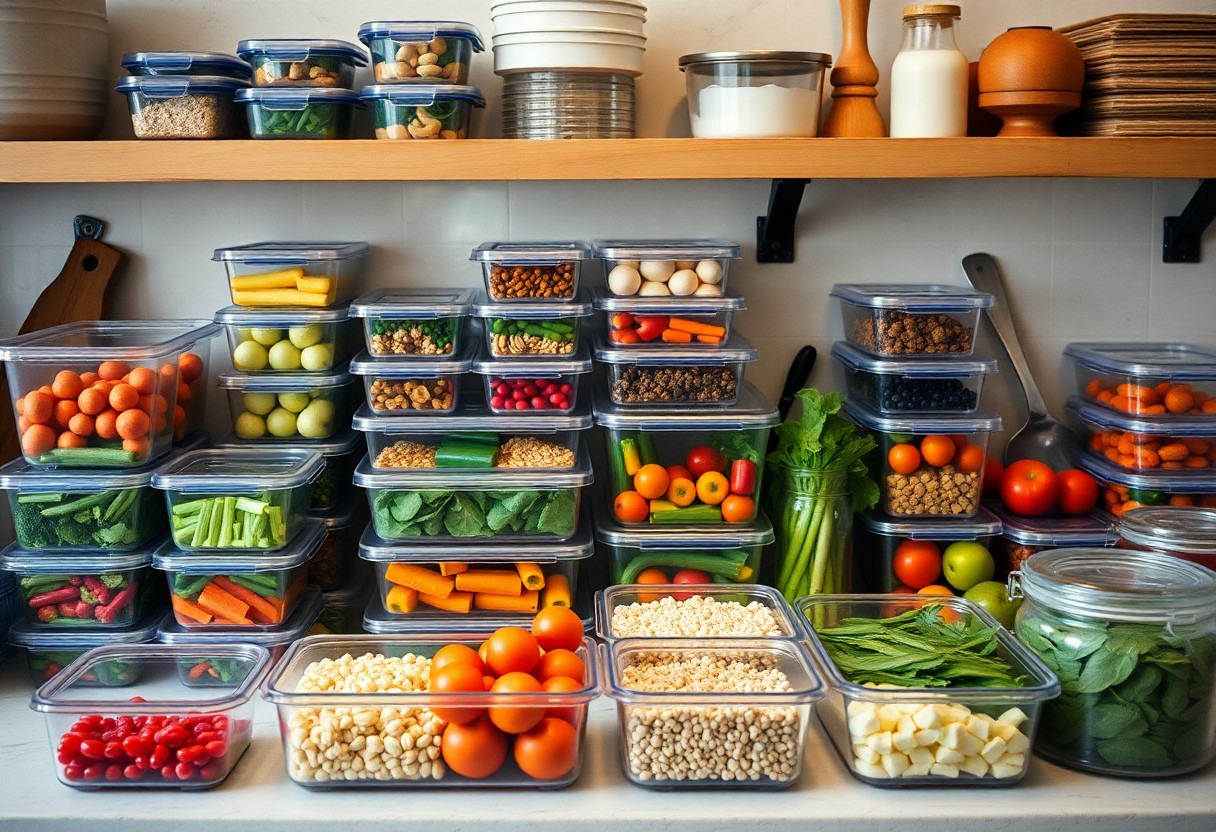
Cooking Techniques for Success
Not all cooking techniques are created equal when it comes to weight loss. To enhance flavor and maintain nutritional value, it’s imperative to utilize methods such as steaming, grilling, and roasting. These techniques can help you create delicious meals that satisfy your taste buds while keeping your calorie intake in check. Check out this guide on How to get ahead with batch cooking for helpful tips on mastering these techniques.
Cooking Methods to Maximize Flavor and Nutrition
Before you begin batch cooking, it’s key to select methods that best enhance both flavor and nutrition. Techniques like sautéing with a splash of olive oil, or slow-cooking can help preserve vital nutrients while infusing your meals with rich flavors. Additionally, incorporating fresh herbs and spices can elevate your dishes without adding extra calories.
Portion Control and Storage Solutions
An easy way to keep your weight loss journey on track is to implement portion control in your batch cooking. By dividing meals into individual servings, you not only manage your portions effectively but also simplify meal access throughout the week. Use clear, labeled containers to store meals in the fridge or freezer, ensuring you can quickly grab a healthy option when hunger strikes.
Further, utilizing varied sizes of containers can help you balance out larger meals or sides with smaller portions of protein or grains. Investing in airtight, stackable containers saves space and keeps your meals fresh longer. Consider using a marker or label maker to track expiration dates so you can enjoy delicious, nutritious meals without losing quality. With these solutions, you’ll create an organized system that supports your weight loss goals.
Incorporating Variety into Your Meals
Keep your meal plan exciting by introducing a range of flavors, textures, and ingredients. This not only helps to prevent boredom but also ensures you receive a broad spectrum of nutrients necessary for your health. Experiment with seasonal vegetables, and whole grains, and try different cooking methods to enhance the uniqueness of your meals. With a little creativity, you can transform simple staples into delightful dishes that support your weight loss journey.
Creative Combinations and Flavor Pairings
Against the tendency to follow strict recipes, embrace the freedom of creating your own meals by mixing and matching ingredients. Pairing unexpected items like roasted vegetables with grains or using fresh herbs for a burst of flavor can lead to delicious discoveries. Don’t hesitate to experiment with spices and sauces to elevate your dishes, making healthy eating not only nourishing but also enjoyable.
Adapting Recipes for Different Dietary Needs
With the growing awareness of various dietary requirements, it’s necessary to adapt recipes to fit your lifestyle. Whether you need gluten-free options, vegan meals, or low-carb versions, modifying recipes allows you to maintain your health goals while still enjoying your favorite dishes.
Variety is key to successfully adapting recipes for different dietary needs. Explore alternative ingredients, such as using cauliflower rice instead of regular rice for a low-carb option, or swapping dairy for plant-based alternatives. This flexibility enables you to cater to your dietary preferences while still enjoying the flavors you love. By getting creative in the kitchen, you can prepare meals that keep you satisfied and aligned with your weight loss goals.

Maintaining Your Batch Cooking Routine
Your batch cooking routine is a key element in achieving weight loss goals. To keep it effective, consistently plan your cooking days and prepare varied dishes to avoid burnout. Invest a little time each week to reassess your meal preferences and adjust accordingly. By staying organized and motivated, you’ll create a sustainable habit that makes healthy eating effortless and enjoyable.
Scheduling Your Cooking Days
Against a busy schedule, it’s vital to set specific cooking days that work for you. Block off time on your calendar, ensuring that you have dedicated slots each week to focus on preparing your meals. Consistency in scheduling will help you stay motivated and make batch cooking a regular part of your routine.
Keeping Your Meals Fresh and Exciting
Below are some tips to keep your meals fresh and engaging. Incorporating a variety of ingredients and cooking methods can help prevent monotony, while experimenting with different spices and sauces can elevate your dishes. Don’t hesitate to swap out proteins, grains, or vegetables each week to explore new flavors and textures.
Your creativity in the kitchen can transform simple batch-cooked items into gourmet meals. Invest in versatile ingredients that can be combined in countless ways—think seasonal veggies, lean proteins, and whole grains. You can also consider theme nights or international cuisine days to switch things up and keep each meal exciting while staying aligned with your weight loss goals.
Final Words
Hence, mastering batch cooking basics can significantly enhance your weight loss journey. By preparing healthy meals in advance, you empower yourself to make better dietary choices, reduce the temptation for unhealthy options, and save time during busy days. Focus on incorporating a variety of nutrient-dense ingredients and store them properly for maximum freshness. With consistent practice, you’ll find that batch cooking not only supports your weight loss goals but also fosters a more organized and enjoyable cooking experience in your daily life.
FAQ
Q: What is batch cooking?
A: Batch cooking involves preparing large quantities of food at once, which can then be portioned out and consumed over a set period. This approach helps save time during the week, reduces the temptation to eat unhealthy foods, and encourages proper meal planning, making it ideal for those focused on weight loss.
Q: How does batch cooking help with weight loss?
A: Batch cooking supports weight loss by allowing individuals to control portion sizes and ingredients, making it easier to stick to a balanced diet. By having pre-prepared healthy meals on hand, there is less likelihood of making impulsive food choices, leading to healthier eating habits overall.
Q: What types of meals are best for batch cooking?
A: Meals that freeze well or can be stored in the refrigerator for a few days are ideal for batch cooking. Soups, stews, stir-fries, grains, and roasted vegetables are excellent choices. Additionally, lean proteins like chicken, turkey, or beans can be cooked in bulk and incorporated into various dishes throughout the week.
Q: How should I store my batch-cooked meals?
A: It’s best to store batch-cooked meals in airtight containers to maintain freshness. Use glass or BPA-free plastic containers and label them with dates and contents. Meals can be stored in the refrigerator for up to five days or frozen for longer storage, typically for three months.
Q: Can I reheat batch-cooked meals, and is it safe?
A: Yes, reheating batch-cooked meals is safe, provided they have been stored properly. It’s important to heat them to an internal temperature of 165°F (74°C) to ensure any potential bacteria are eliminated. Use a microwave, stove, or oven for reheating, and stir well to avoid cold spots.
Q: How do I plan my batch cooking sessions?
A: Begin by selecting recipes that align with your weight loss goals and making a shopping list of all necessary ingredients. Choose a day to dedicate to cooking, typically a weekend, and organize your cooking space. Prepping ingredients in advance can streamline the cooking process, allowing for efficient use of time in the kitchen.
Q: How often should I batch cook?
A: The frequency of batch cooking can vary based on individual needs and schedules. Many people find cooking once a week sufficient, while others may opt for more frequent sessions depending on their meal preferences and family size. Assess your routine and determine what works best for you while ensuring you have healthy meals available when needed.
